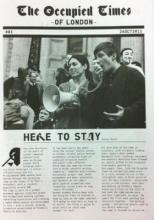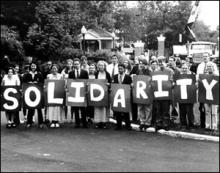(as amended by National Conference, April 2012)
Preamble
Solidarity Federation's ultimate aim is a self-managed, stateless society based on the principle of from each according to their ability, to each according to their needs. It is a society where we are no longer just used as a means to an end by bosses wanting to make money from our labour.
As a revolutionary union initiative, the Solidarity Federation seeks to develop into a revolutionary union (anarcho-syndicalist union). We see this as an essential forerunner to such a society. To this end, SF seeks to create a culture of militant opposition to the bosses and the state, controlled by the workers involved. This means picking fights and winning victories, however small, in order to build confidence and a culture of militancy and solidarity which can take on bigger fights.


